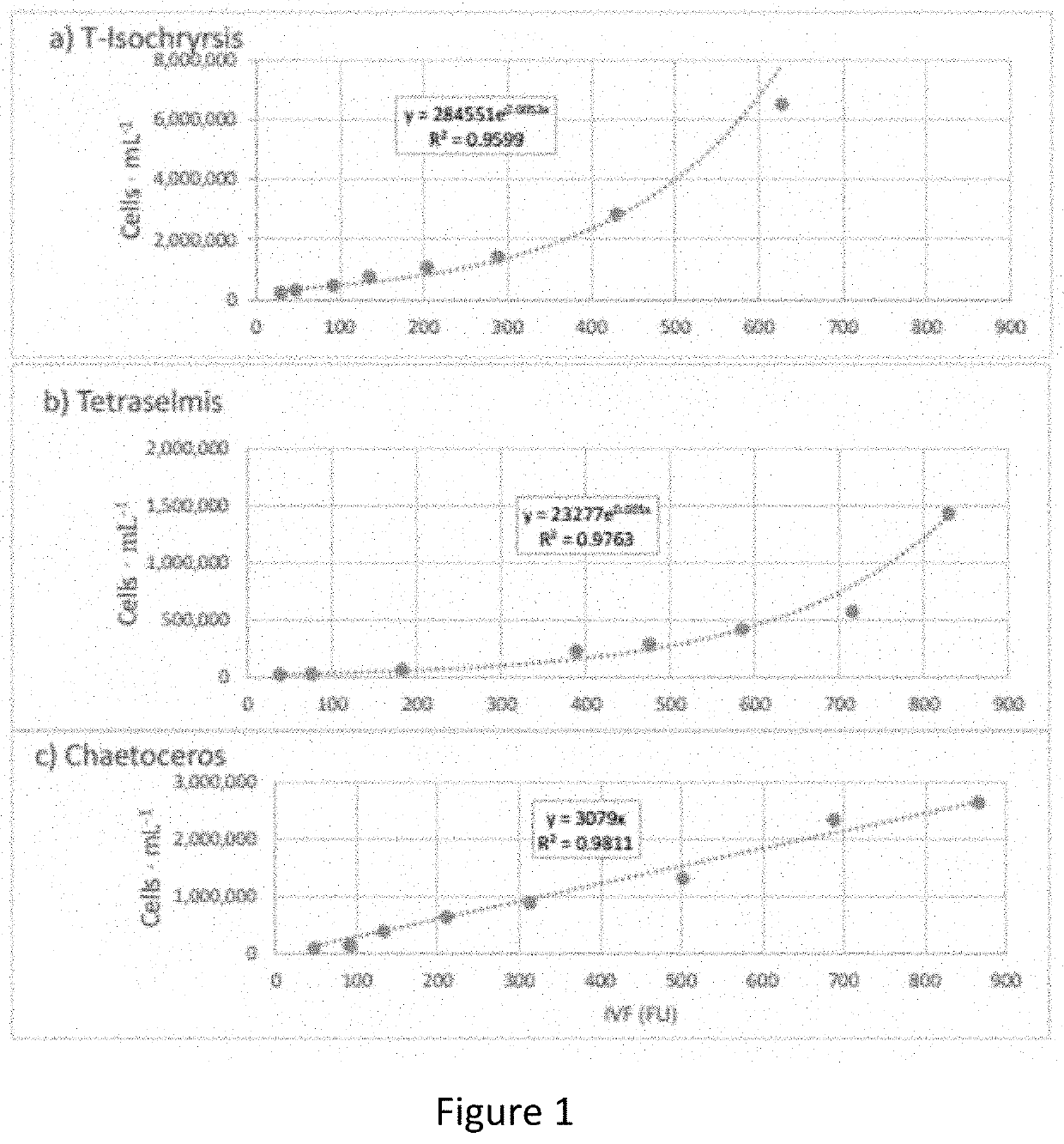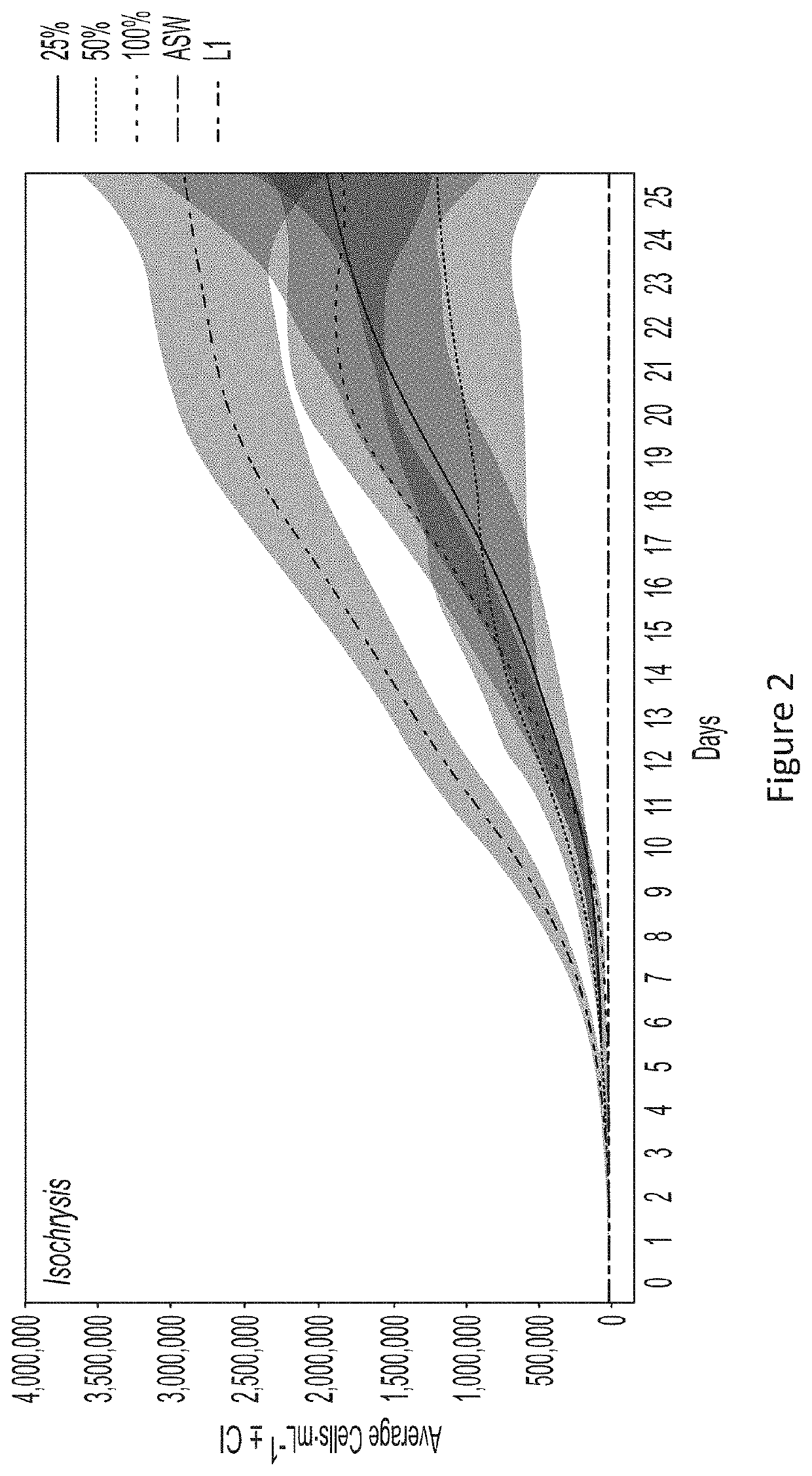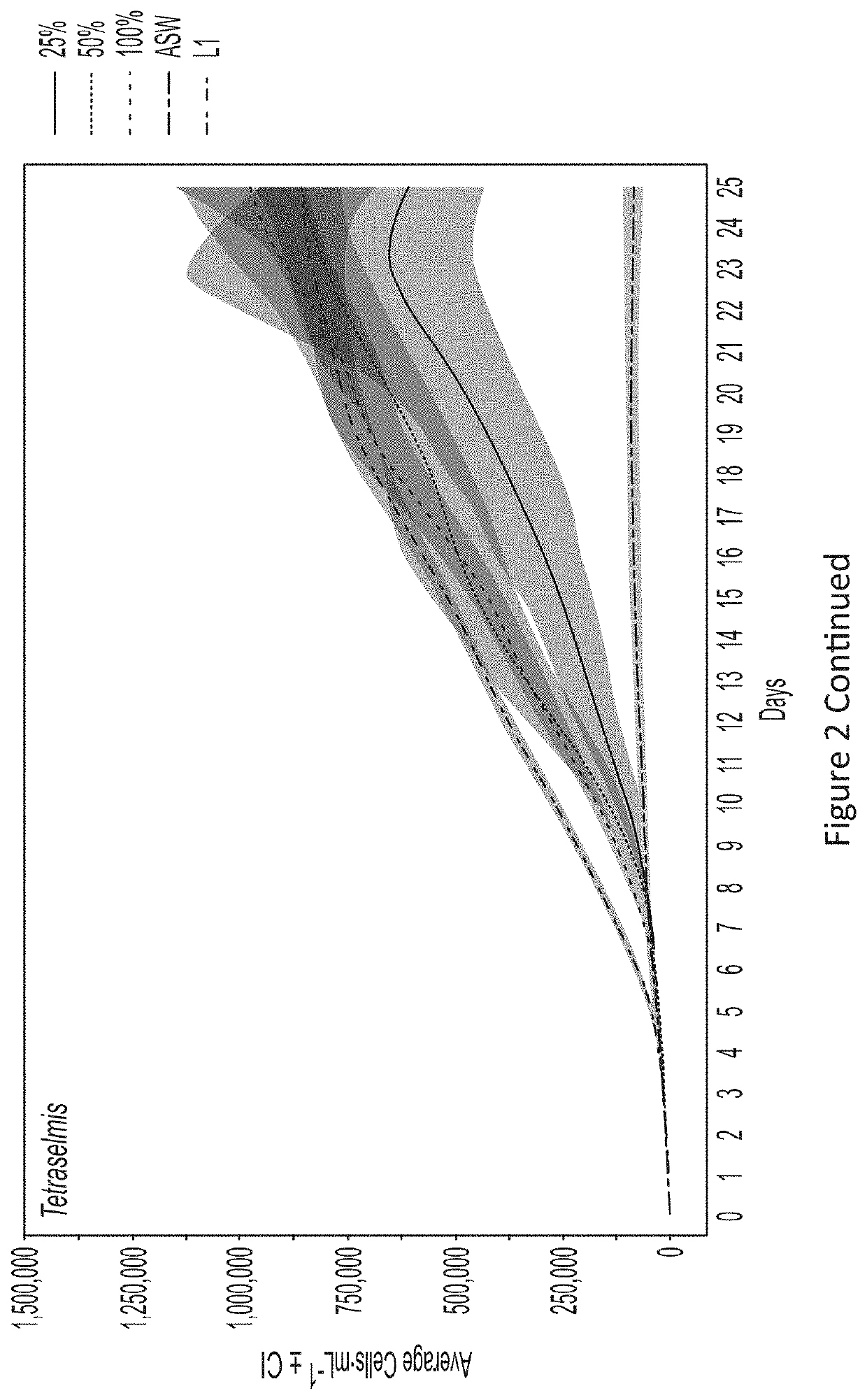Method for using bivalve waste as media for micro-algal production
a technology of bivalve waste and micro-algal, which is applied in the field of cultivating bivalve, can solve the problems of large equipment, high amount of input and labor, difficult management and target, and more intensive form of algal production, and achieves simple low maintenance, high input and labor, and healthy crop.
- Summary
- Abstract
- Description
- Claims
- Application Information
AI Technical Summary
Benefits of technology
Problems solved by technology
Method used
Image
Examples
Embodiment Construction
[0007]Instant Ocean® seawater salt and tap water were used to create a stock ASW mixture at 13 parts per thousand (ppt). The mixture was held in a conical storage tank and aerated at 24° C. for 24-48 hours before animals were introduced. Adult Crassostrea virginica (Eastern Oyster), 2-4″ in mean shell length, were collected from Patterson Bar, Patuxent River, Md. Oysters were scrubbed of epifauna using a wire brush and placed in a freshwater bath for 30 minutes to rid the oysters of any encrusting organisms, to ensure there were no additional fouling organisms that could contribute to nutrient waste in the experimental system. The oysters were then passed through a light bleach bath, rinsed, and placed in a refrigerator overnight before being placed in a 150 L recirculating tank with the artificial seawater. After 24 hours, the tank was drained and rinsed to remove any algae, feces, or pseudo-feces that were in the digestive system. The tank was refilled with 13 ppt artificial water...
PUM
| Property | Measurement | Unit |
|---|---|---|
| cell size | aaaaa | aaaaa |
| weight | aaaaa | aaaaa |
| density | aaaaa | aaaaa |
Abstract
Description
Claims
Application Information
 Login to View More
Login to View More - R&D
- Intellectual Property
- Life Sciences
- Materials
- Tech Scout
- Unparalleled Data Quality
- Higher Quality Content
- 60% Fewer Hallucinations
Browse by: Latest US Patents, China's latest patents, Technical Efficacy Thesaurus, Application Domain, Technology Topic, Popular Technical Reports.
© 2025 PatSnap. All rights reserved.Legal|Privacy policy|Modern Slavery Act Transparency Statement|Sitemap|About US| Contact US: help@patsnap.com



